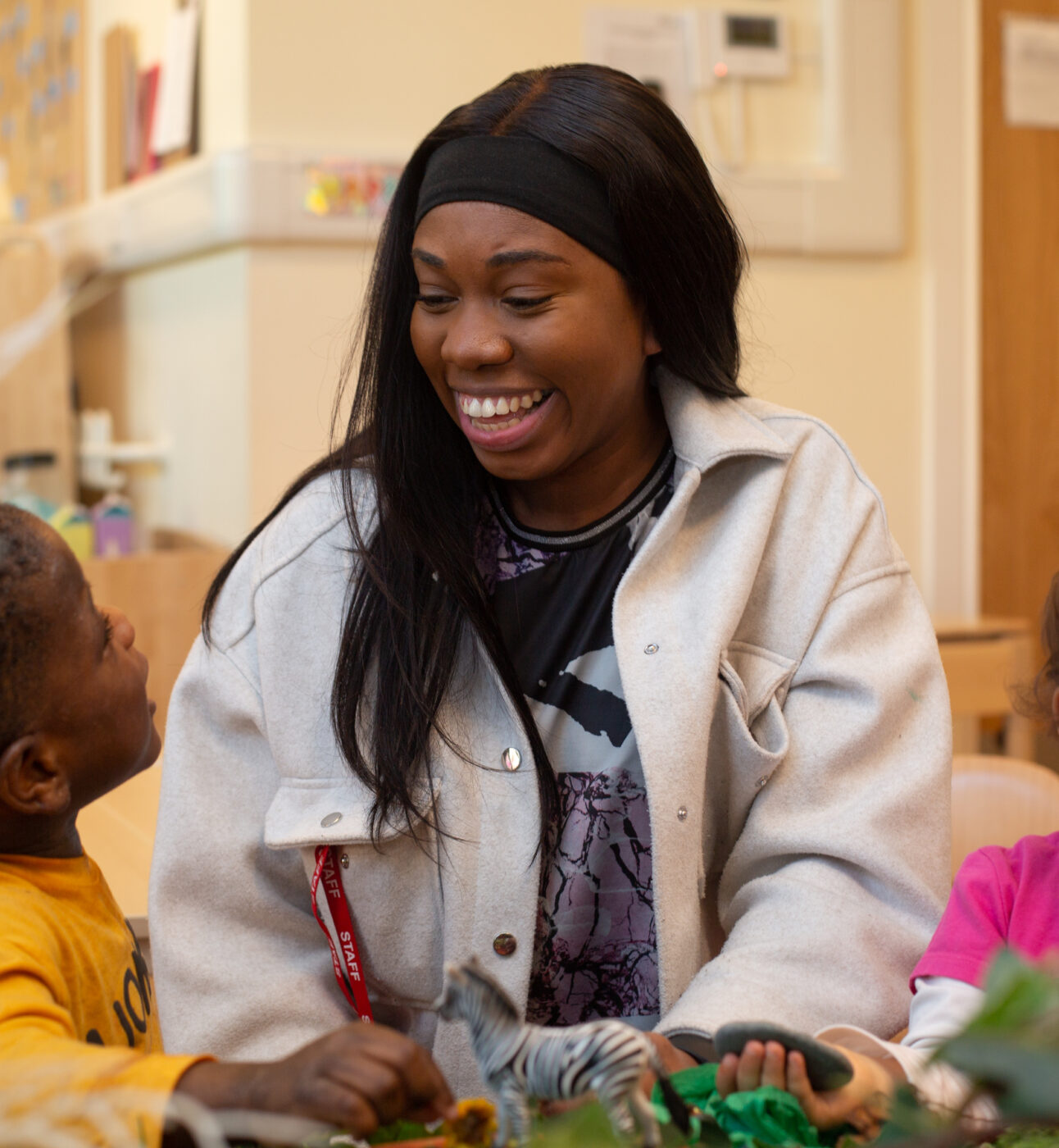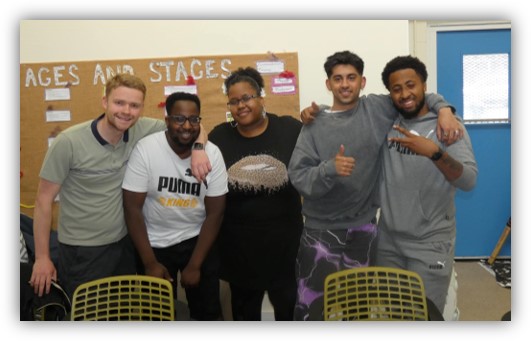
Talking Early Years: In conversation with Eunice Lumsden
Change the Way you Greet them There is a lot of concern about recently qualified staff who appear…
September 8th 2014
This week I attended the 5th Annual Baby Room Conference organised by Kathy Goouch and her team at Canterbury University.
The keynote speaker Annette Karmilof- Smith reflected on how her work in brain development had led her to think about how the baby learns. She opened her speech with a reminder that new-born children can remember the sounds they had been processing during their final trimester in the womb. Apparently, they remembered and responded to TV music themes you listened to or watched during pregnancy. According to YouTube, the top TV themes include ‘I Dream of Jennie’, ‘Hawaii Five O’, ‘The A Team’ and ‘Mission Impossible.’ I must admit that towards the end of one of my pregnancies I took to eating smoked fish while watching ‘Neighbours.’ Had I known about the Mozart effect, I might have revised my dodgy musical options.
Professor Karmilof- Smith went on to explain that in order to learn to talk, children need to make sounds. To do this they need to play with their mouths, forming shapes and movement using their lips, tongue, soft palate and gums. She asked us to remember this when working with babies.
She then surprised the audience by talking about sleep and its significant role in helping babies integrate sounds and language during their sleep. She quoted Ruth Weir’s research from 1962 who found that over time babies practiced sounds, words, grammar and narrative in their sleep. In sharing this information she also dispelled two comment myths; firstly, that children need sleep so their brains can replenish the energy stores and secondly that sleep comes naturally to children. In fact, the brain is very active during sleep and this can cause children to wake easily but need to be allowed to self soothe back to sleep so as to get into a rhythm. So talk to them before they go to sleep and let those sounds permeate their sleep.
More advice for Baby Room staff included: please help babies link sounds to language by listening more, talking less and keeping background noise to a minimum. Develop the triadic interaction; this means that you look into the baby’s eyes and establish a mutual gaze before you talk to them, follow their gaze and check the baby is following you before you talk to them or point to something or identify an object you want to share with them. So, listen, practice sounds and pay attention.
To get in the mood, play Deepside Deejays and when he asks his baby to look into his eyes, instead sit down and gaze into your baby’s eyes…

Change the Way you Greet them There is a lot of concern about recently qualified staff who appear…

I love apprentices… …especially the LEYF apprentices. They are the next generation of Early Years teachers and, in my experience, they are amongst some of the best new…

I am always pleased to be invited to speak about things that matter to me such as social enterprise and the business of childcare, child poverty, pedagogy and wider early…